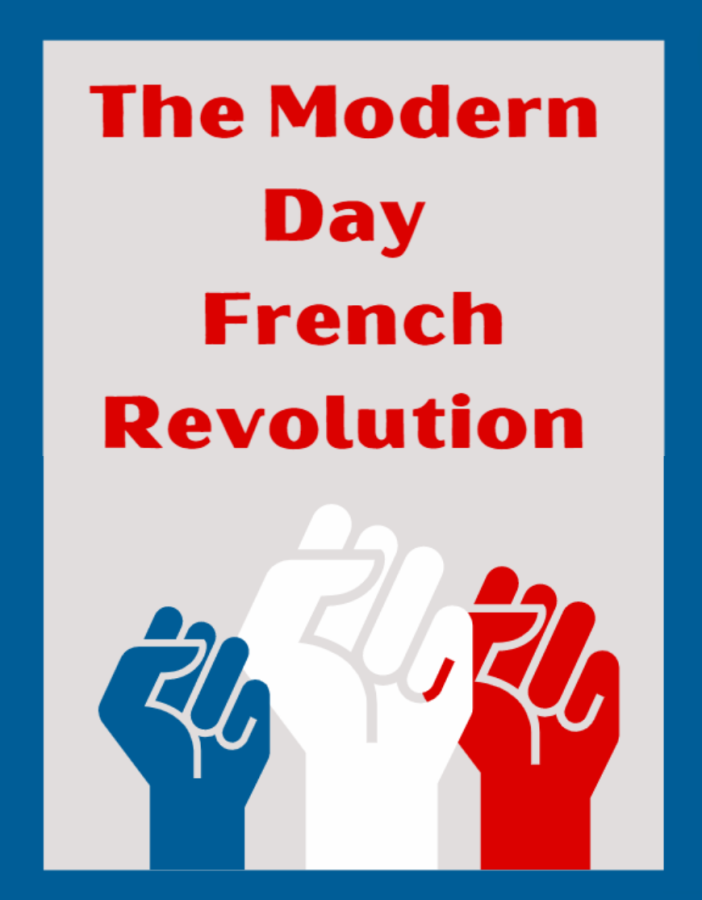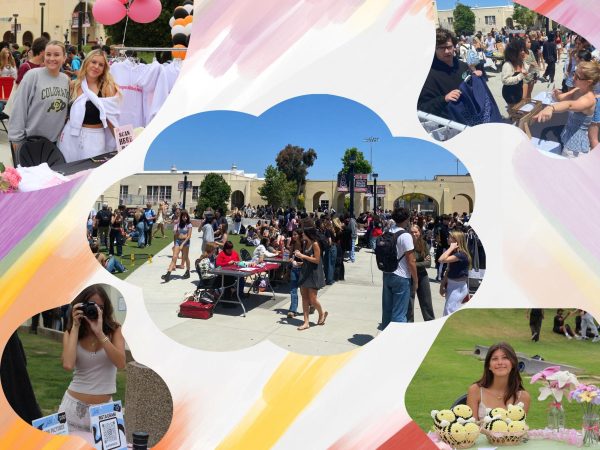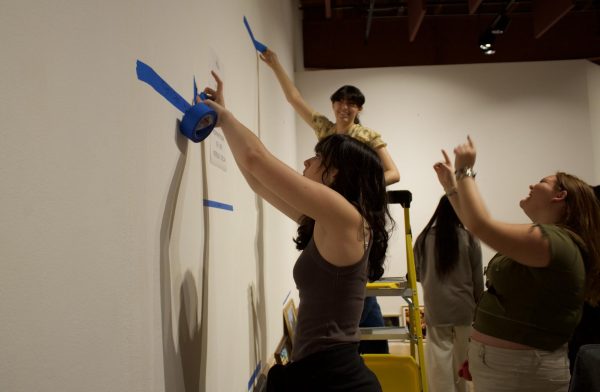The Modern Day French Revolution
A graphic created by Charlotte Nguyen using French colors to convey the current comparison of the riots now and the French revolution. (Graphic by Charlotte Nguyen)
In recent days, French President Emmanuel Macron has put forth a pension reform to raise the retirement age in France from 62 to 64. This decision has angered many French citizens who are now taking to the streets. What started as a peaceful protest in the hope of voicing the anger French citizens felt towards this reform has now turned into a violent uproar in many French cities such as Paris, Lyon, Marseille, Lille, Bordeaux, and Rennes.
Since these protests have escalated, union workers have gone on strike, transportation systems have shut down, fires have broken out, teachers have walked off the job, trash now lines the streets, and French police are throwing tear gas at protesters. The streets of France have turned into a battlefield. People have posted the current state of the city streets on platforms such as “TikTok.”
This escalation began when protesters set the Bordeaux city hall entrance on fire on Thursday, March 23. To stop protesters, French police used tear gas and water cannons on the crowd. Publications like Reuters and Vox have found that 149 police were injured and 172 citizens arrested. As of now, the exact number of civilian injuries and damage is still unknown. However, this was not the only march. According to an article by BBC there have been over 300 marches involving anywhere from 1 million people according to the French ministry, or 3.5 million according to protesters carrying out marches.
The escalation into violence was not caused by protestors. An anarchist group, the Black Bloc, is primarily responsible for property destruction. They have also smashed windows of stores and destroyed public furniture and bikes. Fires have also broken out because of the Black Bloc.
Due to recent events, King Charles III of England had to cancel his trip to France. The King was supposed to arrive in France by train and dine with President Macron at the Eiffel Tower and Palace of Versailles, which are now closed due to the uprisings.
Even with the dissenting stance on the matter, Macron refuses to change his position. The President feels the law is essential to funding retirement opportunities. Even with other options presented, such as implementing higher taxes on companies or the wealthy, Macron still believes that this reform is the best option for the French economy.
The French citizens hope to achieve social reform and justice. They are angry that reform rushed through parliament without a vote—which is now being seen as an abuse of power by the French democracy. However, the method Macron used to get his bill approved is constitutionally legal due to article 49.3, which allows for a bill to be pushed through the national assembly of the French constitution. If the bill stands, it will be signed into law by the end of the year.
Reports conducted say that many French citizens don’t intend to stop these demonstrations until the reform fails to pass. Demonstrators have stated that they feel misrepresented and that the democratic process no longer holds meaning. The French have voiced that the only way of being heard is through protest as the government ignored their other attempts.
Your donation will support the student journalists of Huntington Beach High School. Your contribution will allow us to cover our annual website hosting costs.
Thank you for supporting our program!







